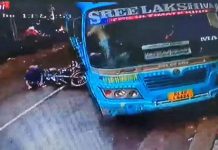An auto rickshaw (in India) or rickshaw (in Pakistan), also known as CNG (in Bangladesh), Bajay or Bajaj (in Jakarta, Indonesia), Bemo in Bali, Indonesia (particularly share taxis based on the Daihatsu Midget), three-wheeler or trishaw (in Sri Lanka), tuktuk (inThailand), trishaw, autorick, bajaji (in Madagascar and Tanzania), keke Napep or Maruwa (in Nigeria), rick, tricycle (in the Philippines), mototaxi, baby taxi, lapa or tukxi (Piaggio Ape Calessino) in popular parlance, is a motorized development of the traditional pulled rickshaw or cycle rickshaw.
Most have three wheels and do not tilt. An exception is in Cambodia, where two different types of vehicles are called tuk-tuks, one of which (also known as a remorque) has four wheels and is composed of a motorcycle (which leans) and trailer (which does not).
Auto rickshaw reverse race : Video..!!
The auto rickshaw is a common form of urban transport, both as a vehicle for hire and for private use, in many countries around the world, especially those with tropical or subtropical climates, including many developing countries.
Most cities offer auto rickshaw service, although cycle rickshaws are also common and even hand-pulled rickshaws exist in certain areas such as Kolkata.
Auto rickshaws are used in cities and towns for short distances; they are less suited to long distances because they are slow and the carriages are open to air pollution. Auto rickshaws (often called “autos”) provide cheap and efficient transportation. Modern auto rickshaws run on compressed natural gas (CNG) and are environmentally friendly compared to full-sized cars.
It is also not uncommon in many parts of Indian metropolitan areas to see primary school children crammed into an auto rickshaw, transporting them between home and school, equivalent to the ‘school run’ performed by many parents in the West using their own cars.
To augment speedy movement of traffic, auto rickshaws are not allowed in the southern part of Mumbai.
India is the location of the annual Rickshaw Run.



















